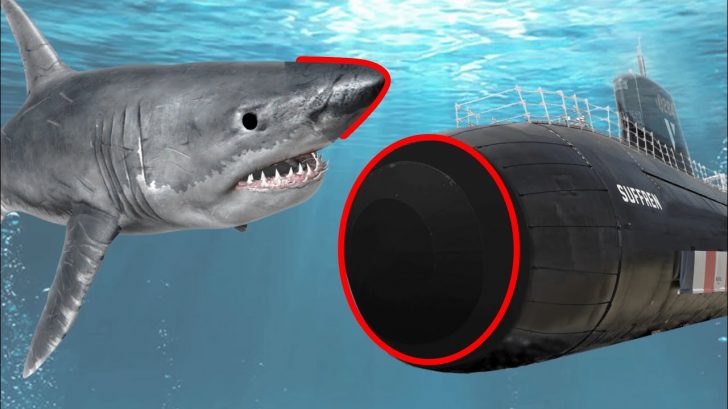Prior to the Cold War, most submarines had a somewhat pointed bow. That’s because most submarines were more like boats as they spent more time on the surface. Older submarines needed fresh air intake for their diesel engines to work.
Turning Point
Launched in 1954, USS Nautilus became the first nuclear-powered submarine in the world. Nuclear submarines have proven to be able to travel long distances underwater. However, it still didn’t have the modern bows we have today. Nautilus had a semi-pointed bow specially designed to accommodate its sonars.
Albacore’s New Hull
The diesel-powered USS Albacore was America’s first attempt to design a submarine that focused on submerged performance. One of its goals was to minimize resistance while submerged, which led to its teardrop hull shape. It reduced hydrodynamic drag when submerged, but decreased its sea-faring capabilities while surfaced. Not only was she faster because of this change, she was also more maneuverable.
Modern Submarine Designs
Subs today typically have two hulls – a pressure hull and a light hull. The former provides atmospheric pressure for the crew and other devices to function at a specific pressure, humidity, and temperature. Meanwhile, the latter provides space for equipment such as ballast tanks, sonars, and torpedo tubes. Bows are usually at the light hull since it gives the submarines the best possible performance.
Comparing Other Shapes
A paper in the Journal of Scientific and Engineering Research analyzed the effects of various bow shapes on submerged resistance. They found that boat-shaped bows had very high resistance, conic and fish-shaped bows had the lowest, while ellipticals were in the middle of the spectrum.
Sticking With Ellipticals
The bow shape is also dependent on the internal architecture of the boat. Bows usually host a giant spherical sonar and torpedo tubes, neither of these would fit in a conical or fish-shaped bow. After all, sonars are the eyes and ears of submarines.



